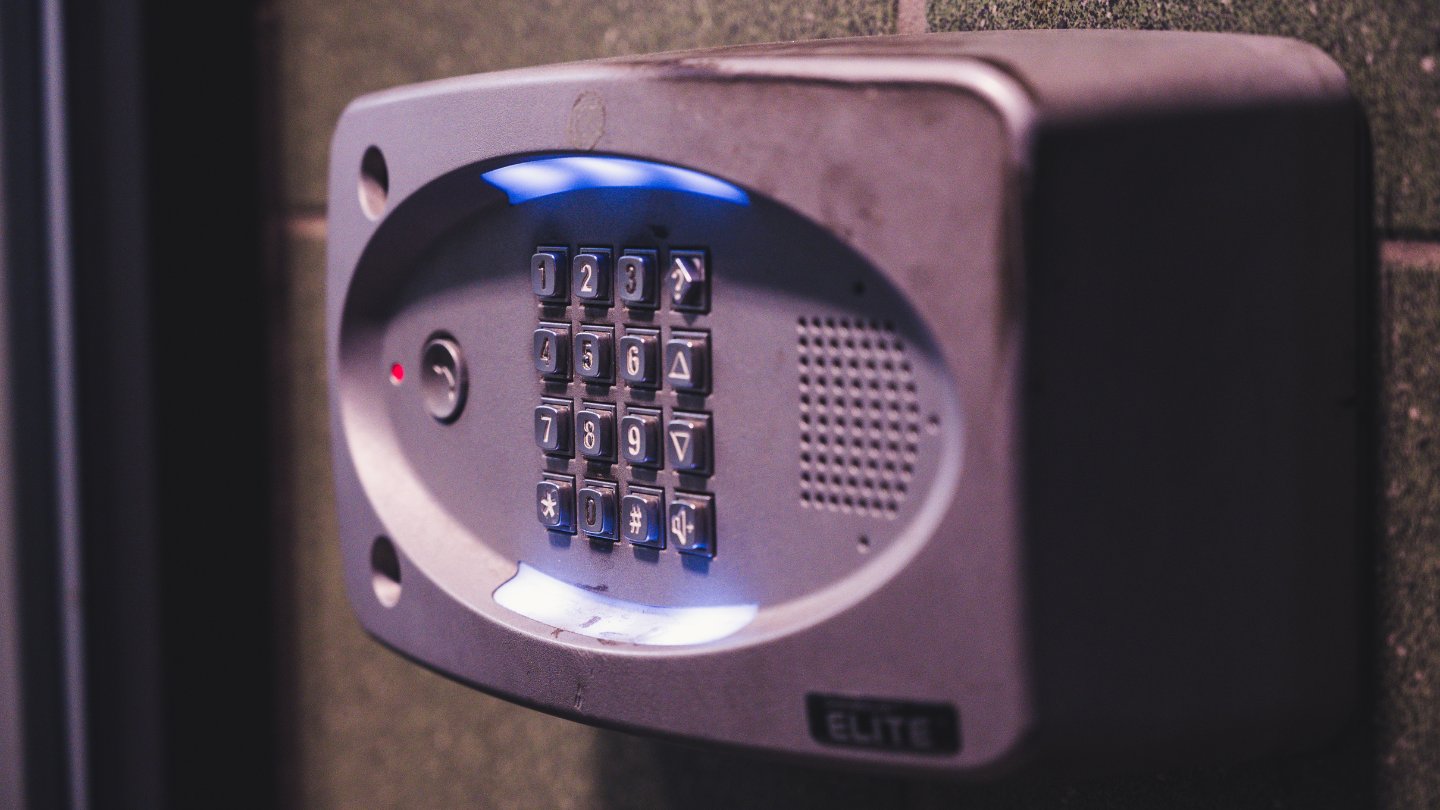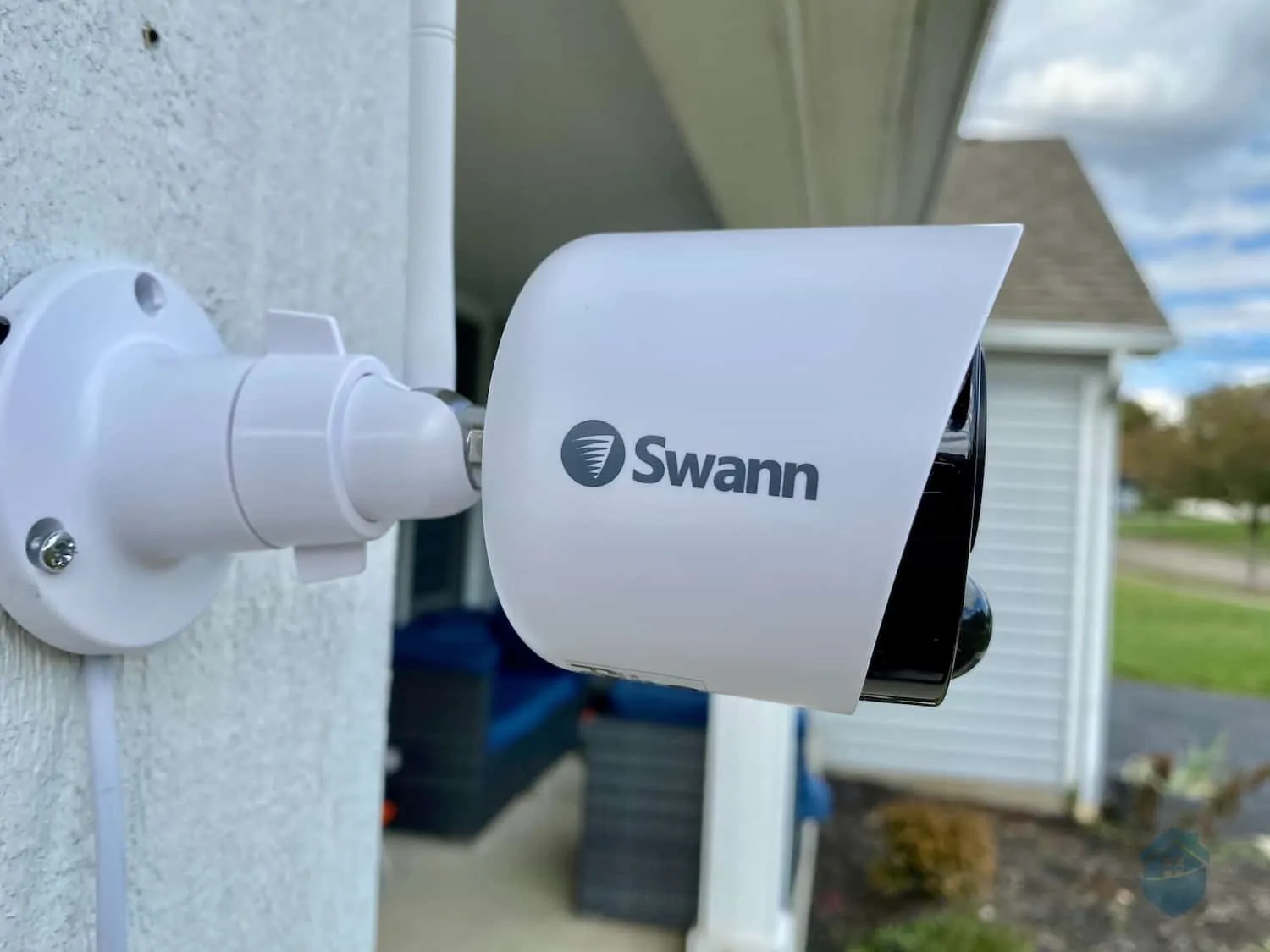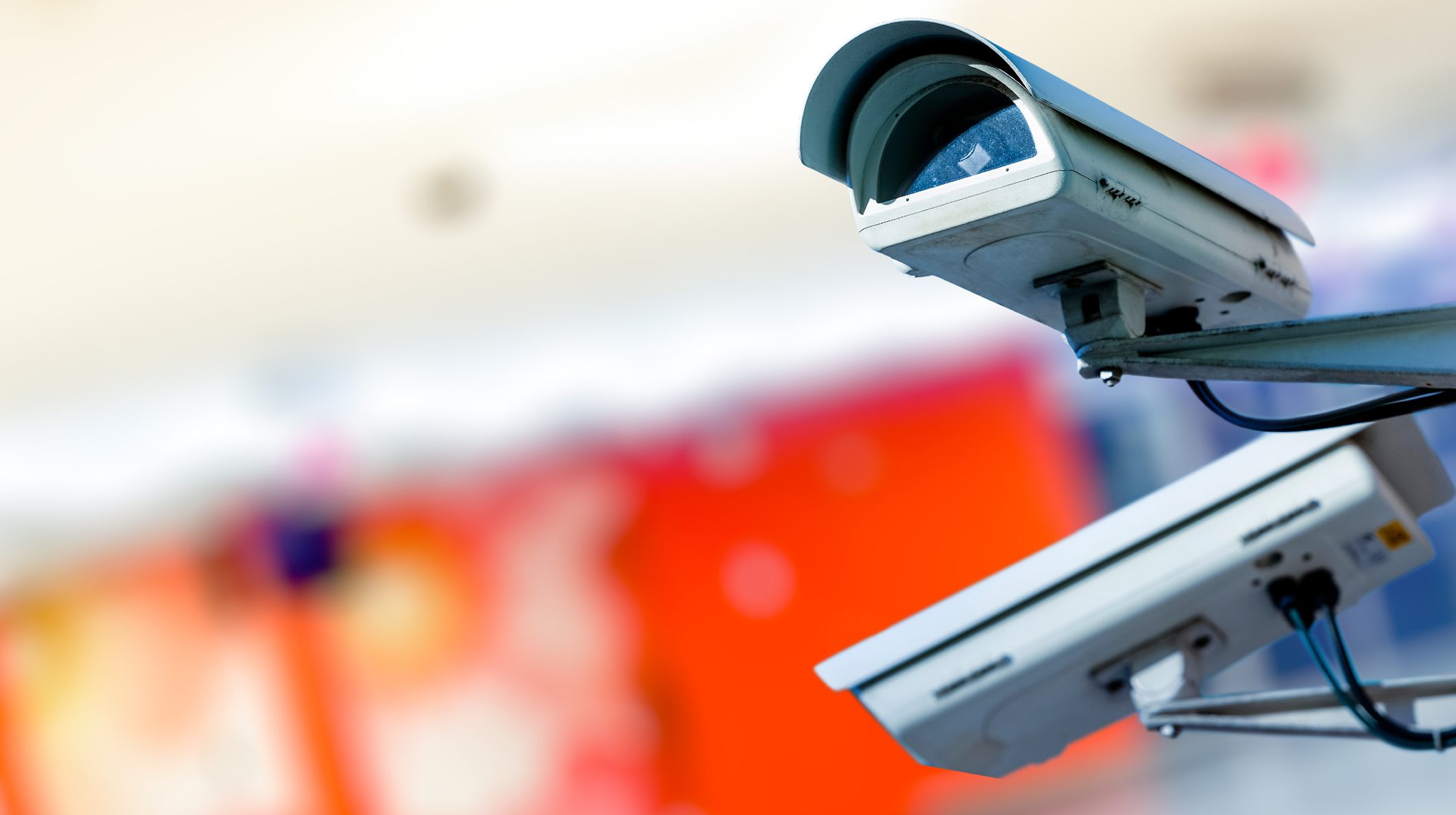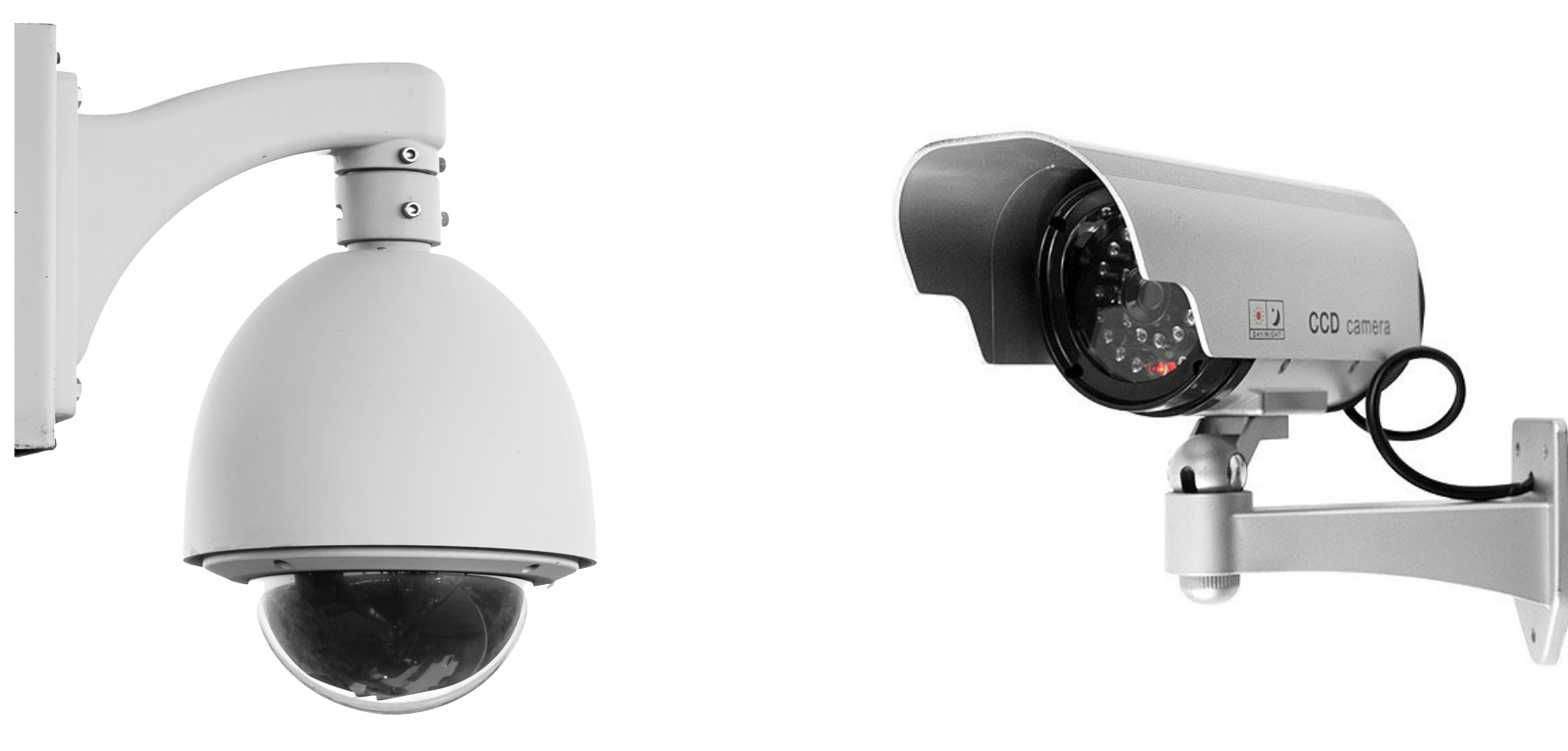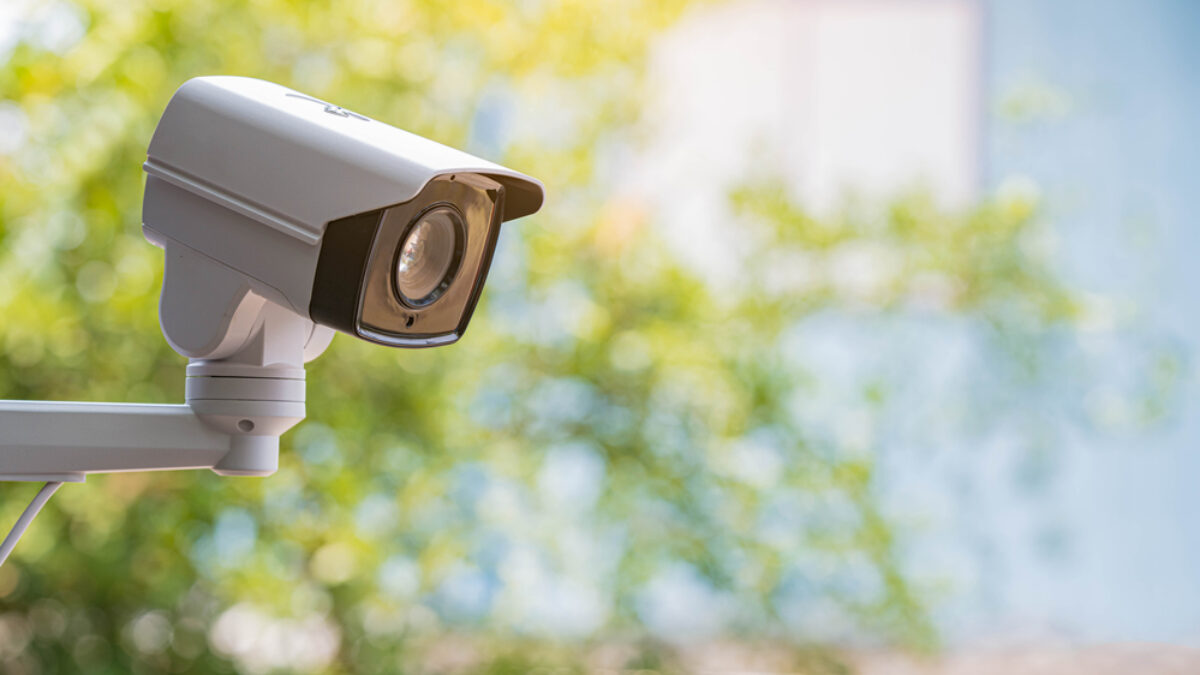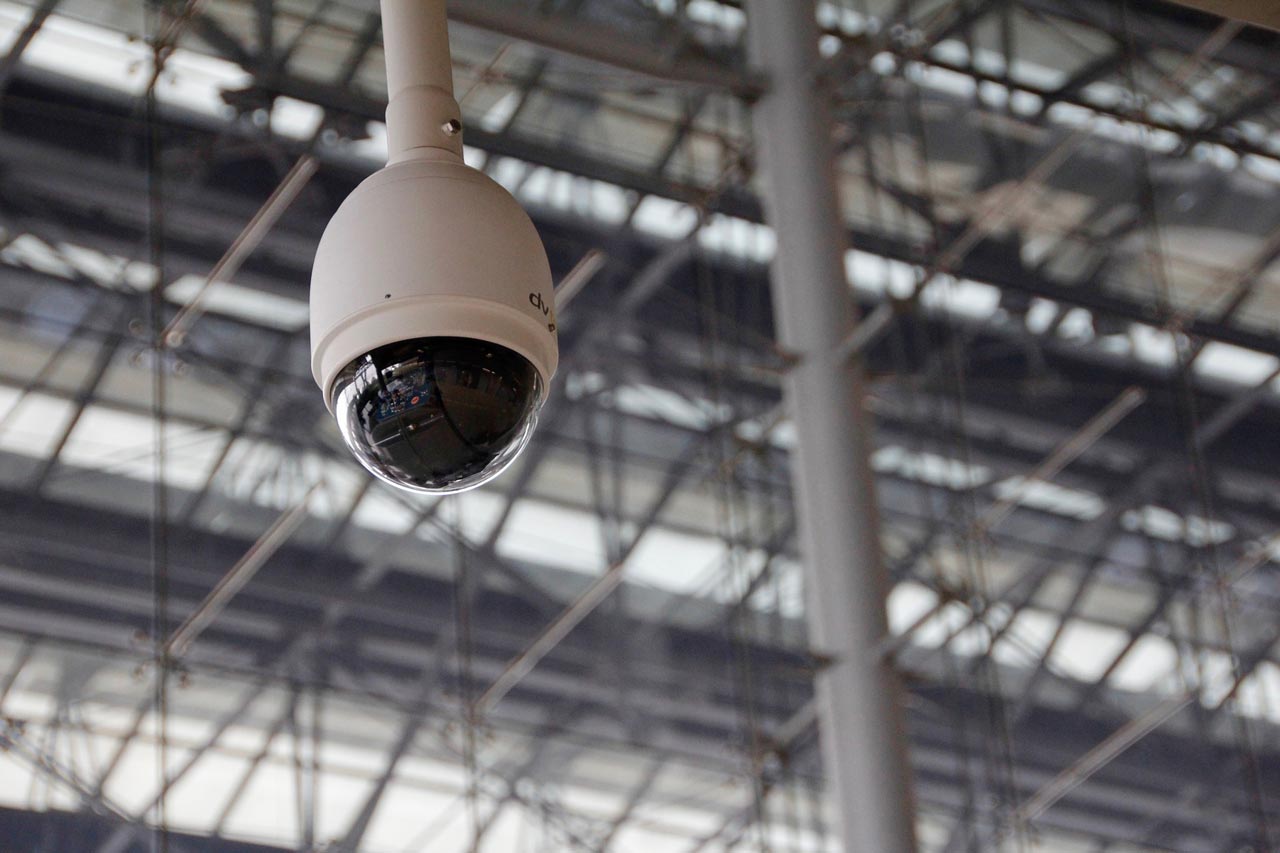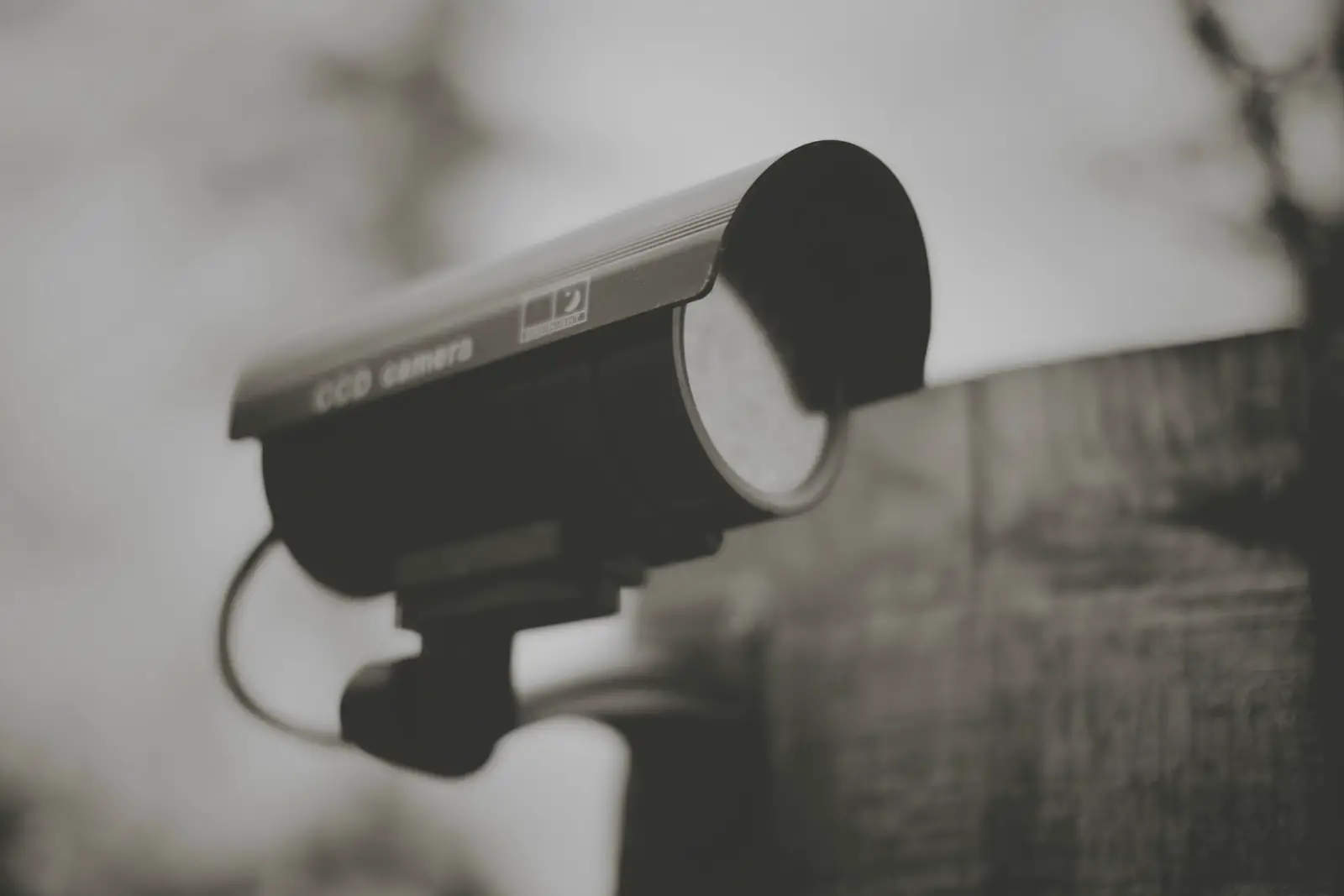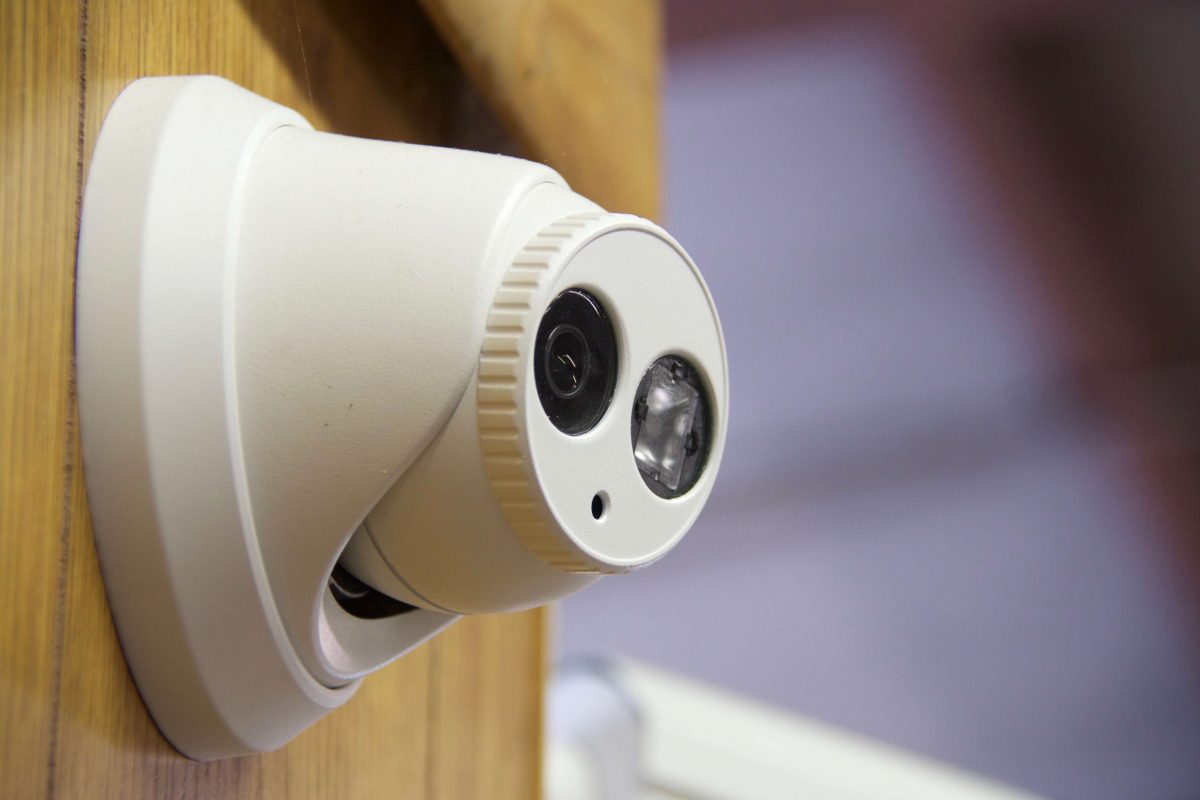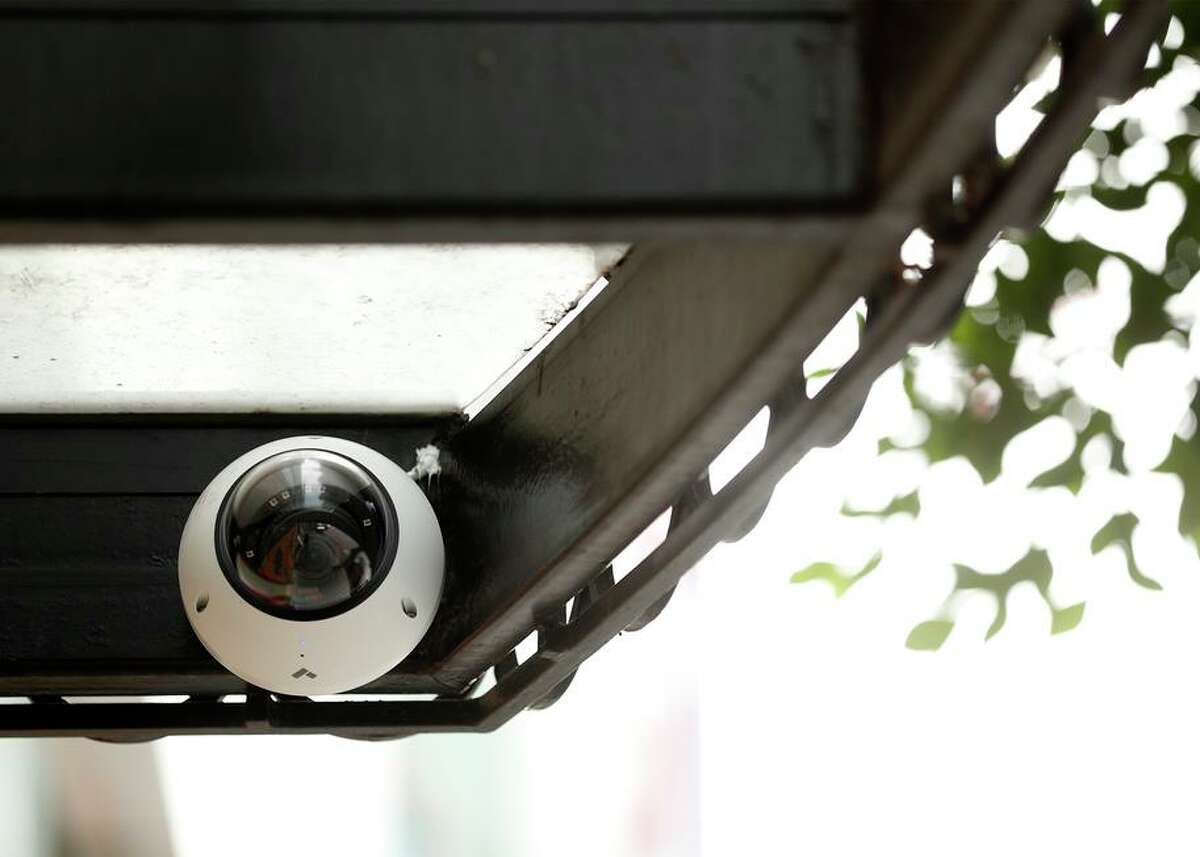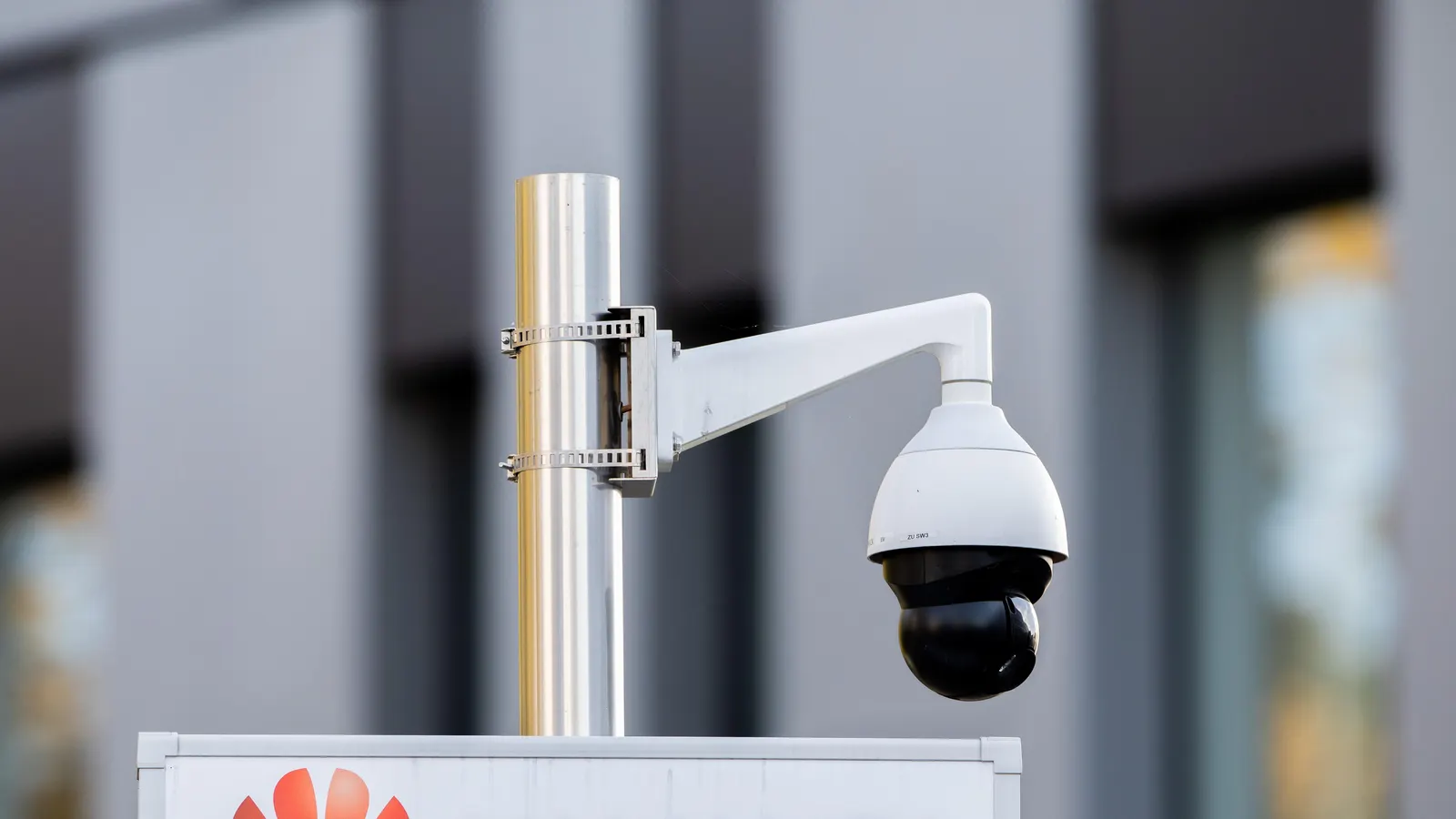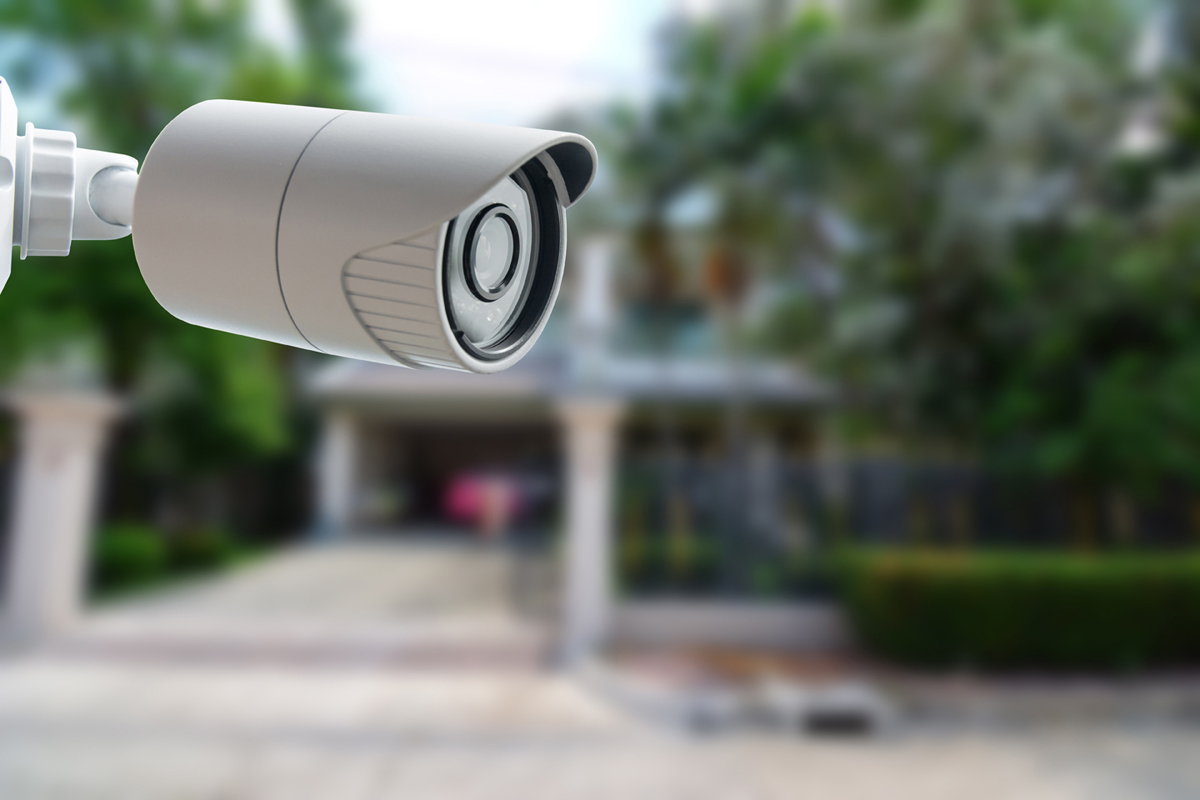Home>Home Security and Surveillance>How To Defeat Security Cameras


Home Security and Surveillance
How To Defeat Security Cameras
Modified: October 19, 2024
Learn effective techniques to bypass security cameras and ensure your home security and surveillance is foolproof. Discover how to defeat security cameras and protect your privacy.
(Many of the links in this article redirect to a specific reviewed product. Your purchase of these products through affiliate links helps to generate commission for Storables.com, at no extra cost. Learn more)
Introduction
Home security cameras and surveillance systems play a crucial role in protecting our homes and ensuring our peace of mind. They act as a deterrent for potential intruders and provide valuable evidence in case of criminal activities. However, there may be instances where individuals might want to defeat security cameras for various reasons. Although we strongly advocate for the proper use of security cameras and compliance with the law, it is essential to understand the vulnerabilities and potential mitigation techniques.
In this article, we will explore the different aspects of security cameras and how to defeat them. Please note that the information provided here is purely for educational purposes, and any attempt to use these techniques for illegal activities is strictly prohibited.
Disclaimer: The content provided in this article is intended for informational purposes only. The misuse of security camera defeat techniques for illegal activities is against the law and can result in severe penalties. Always abide by the law and respect the privacy of others.
Key Takeaways:
- Understanding Vulnerabilities
Security cameras have blind spots, wired connections that can be tampered with, and susceptibility to hacking. It’s crucial to know these vulnerabilities to enhance security measures responsibly. - Ethical Approach to Security
Planning and implementing ethical strategies to protect security cameras is essential. Changing default passwords, updating firmware, and securing networks are key steps in safeguarding homes responsibly.
Read more: How To Defeat Home Security Systems
Understanding Security Cameras
Before diving into the methods of defeating security cameras, it is crucial to have a basic understanding of how they work. Security cameras, also known as CCTV cameras (Closed-Circuit Television), are devices that monitor and record activities in a specific area. They come in various shapes and sizes and can be installed both indoors and outdoors.
Most security cameras consist of a camera lens, an image sensor, and a housing that protects the internal components from weather conditions. The lens captures the images, and the image sensor converts them into electrical signals. These signals are then transmitted to a digital video recorder (DVR) or a network video recorder (NVR) for storage and monitoring purposes. In some cases, the cameras may be connected to a computer or a mobile device for remote viewing.
Security cameras can be configured to record continuously or trigger recording only when motion is detected. Some cameras also offer features like infrared night vision, allowing them to capture clear footage in low-light conditions. Additionally, advancements in technology have led to the development of wireless cameras that can be easily installed without the need for extensive wiring.
It is important to note that security cameras serve as a means to deter potential criminals and provide evidence in case of incidents. They are not foolproof devices and can have vulnerabilities that can be exploited under certain circumstances. Understanding these vulnerabilities can help individuals identify potential weaknesses and take appropriate precautions.
Identifying Vulnerabilities
While security cameras are designed to enhance home security, they can still have vulnerabilities that could potentially be exploited. Identifying these vulnerabilities is the first step in understanding how to defeat security cameras.
One common vulnerability is the positioning of the cameras. Some cameras may be mounted in a way that exposes blind spots or areas that are out of their field of view. These blind spots can provide individuals with an opportunity to avoid detection or manipulate their actions without being recorded.
Another vulnerability is the reliance on wired connections. Wired cameras are connected using cables, which can be tampered with or cut, disabling the camera’s functionality. Additionally, if the recordings are stored on-site, an attacker could potentially gain physical access to the recording device and remove or tamper with the footage.
Wireless cameras, while offering convenience, can also have vulnerabilities. They rely on wireless networks for communication, which can be susceptible to interception or jamming. If an attacker gains access to the network or disrupts the wireless signal, they may be able to disable the cameras or manipulate the recordings.
Moreover, security cameras that are connected to the internet can be vulnerable to hacking. Weak or default passwords, outdated firmware, and unsecured network configurations can provide an entry point for hackers. Once inside, they may be able to gain unauthorized access to the camera’s settings, view live feeds, or even manipulate the recordings.
Lastly, weather conditions can also pose a vulnerability. Extreme temperatures, heavy rain, or harsh weather conditions may affect the camera’s performance or cause damage, rendering them temporarily or permanently disabled.
Identifying these vulnerabilities is crucial in order to develop appropriate strategies to defeat security cameras. However, it’s important to reiterate that attempting to defeat security cameras for malicious purposes is illegal and punishable by law. The information provided here should be used responsibly and ethically.
Planning Your Approach
Planning is an essential step when it comes to defeating security cameras. It involves analyzing the vulnerabilities, understanding the environment, and devising a strategy that best suits your objectives. It is crucial to note that ethical considerations and legal compliance should always be prioritized during this process.
The first step in planning your approach is to conduct a thorough survey of the areas covered by security cameras. Identify the locations, angles, and blind spots of each camera. Pay close attention to areas where cameras may have limited coverage or are obstructed by obstructions such as trees, walls, or other objects. These blind spots may provide opportunities for you to avoid detection.
Next, assess the type of cameras being used. Determine whether they are wired or wireless, indoor or outdoor, and whether they are connected to a centralized recording system or stored locally. Understanding the camera’s capabilities and limitations will help you identify possible weaknesses and plan accordingly.
Consider the surroundings and any potential obstacles that may affect your approach. Analyze the lighting conditions, presence of motion sensors, and any other security measures in place. By doing so, you can strategize your actions to minimize the chances of detection and increase your success rate.
It is also important to familiarize yourself with the laws and regulations regarding security cameras in your jurisdiction. Tampering with security cameras, trespassing, or invading someone’s privacy are illegal activities and can result in severe consequences. Make sure to abide by the law and respect the rights and privacy of others.
Once you have a clear understanding of the cameras and their vulnerabilities, plan your approach accordingly. Consider the desired outcome, whether it’s to avoid detection, tamper with the recording, or any other objective. Develop a step-by-step plan that minimizes risks and maximizes your chances of success.
Lastly, always evaluate the ethical implications of your actions. If your motivations lean towards a more sinister intent, reconsider your approach. The purpose of defeating security cameras should be limited to understanding vulnerabilities, enhancing security systems, and protecting privacy, rather than engaging in illegal activities.
By carefully planning your approach, you can effectively navigate security camera systems while maintaining ethical standards and legal compliance.
Physical Manipulation Techniques
Physical manipulation techniques involve physical interference with the security cameras to disrupt their functionality or coverage. These techniques can be employed to either avoid detection or manipulate the recordings. However, it is essential to note that tampering with security cameras for malicious purposes is illegal and unethical. The following information is provided for educational purposes only.
One physical manipulation technique is obstructing the camera’s field of view. This can be done by placing objects strategically in front of the camera, such as potted plants, flags, or curtains. By doing so, you can create a blind spot or distort the camera’s perspective, reducing its effectiveness in capturing clear images or video footage.
Another approach is to tamper with the physical components of the camera. This could involve covering the lens with tape or adhesive material, which can significantly impair its ability to capture clear images. However, this method may be easily detected and could raise suspicions.
In some cases, it may be possible to physically damage the camera by breaking or disabling its components. This can be done by using tools or implements to smash or disable the lens, image sensor, or other critical parts of the camera. However, this method is highly destructive and carries legal consequences.
If you have access to the camera’s power source, cutting or disabling the power supply can render the camera useless. However, this may draw attention if the camera is being actively monitored.
Disguising or camouflaging the camera can also be an effective physical manipulation technique. This could involve using spray paint, stickers, or other materials to blend the camera into its surroundings, making it less conspicuous.
It is essential to reiterate that these physical manipulation techniques should only be used in legitimate scenarios where authorized individuals have legitimate reasons to modify or disable security cameras. Engaging in any illegal activities, such as vandalism or destruction of property, is strictly prohibited and punishable by law.
If you believe there is a need to modify or disable security cameras, always consult with legal authorities or professionals in the field to ensure compliance with the law and ethical guidelines.
To defeat security cameras, you can use infrared lights to blind the camera, or wear a mask and hood to avoid being identified. Be aware that tampering with security cameras is illegal.
Read more: How To Waterproof A Security Camera
Camera Blinding Methods
Camera blinding methods involve techniques to overwhelm or overpower the camera’s sensors, resulting in the obstruction of clear visibility and capturing of images or videos. It is important to note that using these methods for malicious purposes is illegal and unethical. The following information is provided for educational purposes only.
One common camera blinding method is the use of bright lights or lasers. By shining a powerful light source directly at the camera lens, you can overwhelm the image sensor and create a bright glare, rendering the camera’s footage useless. However, it is crucial to use caution when employing this method, as shining lasers or bright lights at individuals can cause harm and is also illegal in many jurisdictions.
Another approach is to use reflective materials, such as mirrors or reflective surfaces, to deflect light back at the camera lens. This can cause a significant amount of glare and impair the camera’s ability to capture clear images. However, this method may not be effective in low-light conditions or if the camera is equipped with infrared or night vision capabilities.
Using smoke or fog machines can also be an effective blinding technique. By generating a dense cloud of smoke or fog in the camera’s vicinity, you can obstruct its field of view and make it difficult for the camera to capture clear footage. However, this method may raise suspicion or trigger the camera’s motion detection capabilities.
Additionally, deploying reflective or shiny objects in the camera’s line of sight can cause lens flare or reflections, leading to distorted or obscured images. This can be achieved by placing mirrors, shiny pans, or other reflective surfaces strategically.
It is important to exercise caution and consider the potential risks associated with camera blinding methods. Blinding a camera not only affects its intended purpose but can also interfere with legitimate surveillance and compromise security measures. It is crucial to respect the rights and privacy of others and avoid engaging in any illegal activities.
Always remember that camera blinding techniques should only be used in authorized scenarios or with the permission of the camera owners. If you have any concerns about security cameras, consult with legal authorities or professionals in the field to address the issues appropriately.
Jamming and Disruption Strategies
Jamming and disruption strategies involve interfering with the signals used by security cameras to transmit data or communicate with other devices. It is crucial to note that using these strategies for malicious purposes is illegal and unethical. The following information is provided for educational purposes only.
One common method is signal jamming. This involves transmitting radio signals on the same frequency used by the camera, effectively causing interference and disrupting its ability to transmit data. Signal jammers can be purchased online, but it’s important to note that the use of signal jammers is illegal in many jurisdictions due to potential risks and the interference they can cause to legitimate communication systems.
Another disruptive technique is the use of electromagnetic interference (EMI). By emitting electromagnetic waves near the camera, you can interfere with the camera’s sensors or the transmission of data, leading to distorted or disrupted footage. However, it is important to note that generating EMI can interfere with other electronic devices and cause unintended consequences.
Similarly, disrupting the camera’s network connection can render it ineffective. This can be achieved by interfering with the Wi-Fi signal or physically disconnecting the camera from the network. However, it is important to note that tampering with network connections without authorization is illegal and could result in severe consequences.
Additionally, physical obstruction can be employed to disrupt the camera’s ability to record clear footage. This can be done by placing objects in front of the lens, such as reflective surfaces or materials that block the view. Another approach is to use devices that emit strong infrared light, which can overwhelm the camera’s sensors and create overexposed or distorted images.
It is crucial to remember that jamming and disruption strategies can have unintended consequences and impact legitimate communication systems and devices. Engaging in any illegal activities or causing harm to others is strictly prohibited and punishable by law.
If you encounter concerns regarding security cameras, it is recommended to consult with legal authorities or professionals in the field to address the issues appropriately and follow proper protocols.
Hacking and Exploitation Techniques
Hacking and exploitation techniques involve gaining unauthorized access to security cameras or exploiting vulnerabilities in their software or network infrastructure. It is crucial to note that engaging in hacking activities without proper authorization is illegal and unethical. The following information is provided for educational purposes only.
One common hacking technique is exploiting default or weak passwords. Many security cameras come with default usernames and passwords, which are often not changed by the owners. By using basic hacking tools or techniques such as brute force attacks, an attacker can gain access to the camera’s settings, live feed, or recorded footage. It is crucial for camera owners to use strong, unique passwords and follow best practices for securing their devices.
Another method involves exploiting vulnerabilities in the camera’s firmware or software. Like any other electronic device, security cameras may have security flaws that can be exploited by malicious individuals. By identifying these vulnerabilities, attackers can gain control over the camera, manipulate its settings, or even disable it altogether. Camera manufacturers regularly release firmware updates to patch these security vulnerabilities. It is essential to keep your cameras up to date with the latest firmware versions to mitigate the risks.
Man-in-the-middle (MITM) attacks can also be employed to intercept data transmitted between the security camera and the central recording device or monitoring system. By positioning themselves between the camera and the network, attackers can capture and manipulate the data, allowing them to view or modify the footage. Implementing secure communication protocols, such as using encryption and certificates, can help prevent these types of attacks.
Furthermore, it is worth mentioning that cameras connected to the internet can be susceptible to remote hacking if proper security measures are not in place. Attackers can exploit weaknesses in the network configuration, gain unauthorized access to the camera’s web interface, or even exploit software vulnerabilities to take control of the camera remotely. It is crucial to secure the network, use strong passwords, and regularly update camera software to minimize these risks.
Again, it is important to emphasize that hacking and exploitation techniques should never be employed for malicious purposes. Unauthorized access, data manipulation, and invasion of privacy are illegal activities that can lead to severe consequences. Always abide by the law and respect the privacy and security of others.
If you have concerns about the security of your cameras, it is advisable to consult with cybersecurity professionals or contact the camera manufacturer for guidance on securing your devices.
Countermeasures and Mitigation
While it is important to understand the vulnerabilities and techniques used to defeat security cameras, it is equally crucial to implement countermeasures and mitigation strategies to protect your cameras and enhance their security. By following these best practices, you can minimize the risk of your cameras being compromised.
First and foremost, always change the default passwords of your cameras. Create strong, unique passwords using a combination of uppercase and lowercase letters, numbers, and special characters. Regularly update these passwords to ensure maximum security.
Keep your cameras’ firmware up to date by periodically checking for firmware updates from the manufacturer. Firmware updates often address security vulnerabilities and improve the overall functionality of the cameras. Apply these updates as soon as they are available.
Secure your network by using encryption and strong passwords for your Wi-Fi. Avoid using common or easily guessable passwords. Disable remote access if not required and regularly monitor network traffic for any suspicious activities.
Physical security is equally important. Properly install the cameras in strategic locations that minimize the risk of vandalism or tampering. Use tamper-resistant housings or enclosures to protect the cameras from harsh weather conditions or physical attacks.
If your cameras are connected to a network video recorder (NVR) or a digital video recorder (DVR), ensure that the recording devices are properly secured as well. Restrict access to authorized individuals and regularly back up the recorded footage to prevent data loss.
Consider implementing additional security measures such as two-factor authentication or secure VPN connections for remote viewing and management of your cameras. This adds an extra layer of protection against unauthorized access.
Regularly monitor and review the recordings to detect any anomalies or suspicious activities. If you notice any unusual behavior or tampering, report it to the authorities immediately.
Lastly, educate yourself and your family members or employees about the importance of security and privacy regarding the cameras. Encourage safe practices and ensure everyone understands the potential risks associated with tampering with security cameras.
By following these countermeasures and mitigation strategies, you can significantly reduce the likelihood of your security cameras being defeated or compromised. Remember to always keep the privacy and security of others in mind and adhere to legal and ethical guidelines.
Read more: How To Choose Security Cameras
Conclusion
Security cameras and surveillance systems are instrumental in protecting our homes and ensuring our safety. While it is important to understand the vulnerabilities and techniques used to defeat security cameras, it is equally important to approach the topic responsibly and ethically. The information provided in this article aims to educate readers about the vulnerabilities and potential methods for defeating security cameras, but it is crucial to respect the law and the privacy of others.
Security cameras play a vital role in deterring potential criminals and providing valuable evidence in case of incidents. They are designed to enhance our security and peace of mind. However, no security system is foolproof, and there may be circumstances where individuals may attempt to defeat security cameras.
We must emphasize that tampering with or defeating security cameras for malicious purposes is illegal and unethical. Engaging in illegal activities can result in severe penalties and compromise the safety of others. The information provided in this article is intended for educational purposes only.
By understanding the vulnerabilities of security cameras, we can implement appropriate countermeasures and mitigation strategies to enhance their security. These measures include changing default passwords, keeping firmware up to date, securing networks, using tamper-resistant housings, and adhering to best practices for protecting our cameras and the recorded footage.
If you have concerns about the security of your cameras or suspect any tampering, it is advisable to consult with cybersecurity professionals, contact the camera manufacturer, or report the issue to law enforcement authorities.
Remember, the goal should be to utilize security cameras responsibly, respect privacy laws, and work towards enhancing the overall security and protection of our homes and communities.
Ultimately, the security and privacy of individuals are of paramount importance, and it is our collective responsibility to maintain a safe and secure environment for all.
Frequently Asked Questions about How To Defeat Security Cameras
Was this page helpful?
At Storables.com, we guarantee accurate and reliable information. Our content, validated by Expert Board Contributors, is crafted following stringent Editorial Policies. We're committed to providing you with well-researched, expert-backed insights for all your informational needs.

